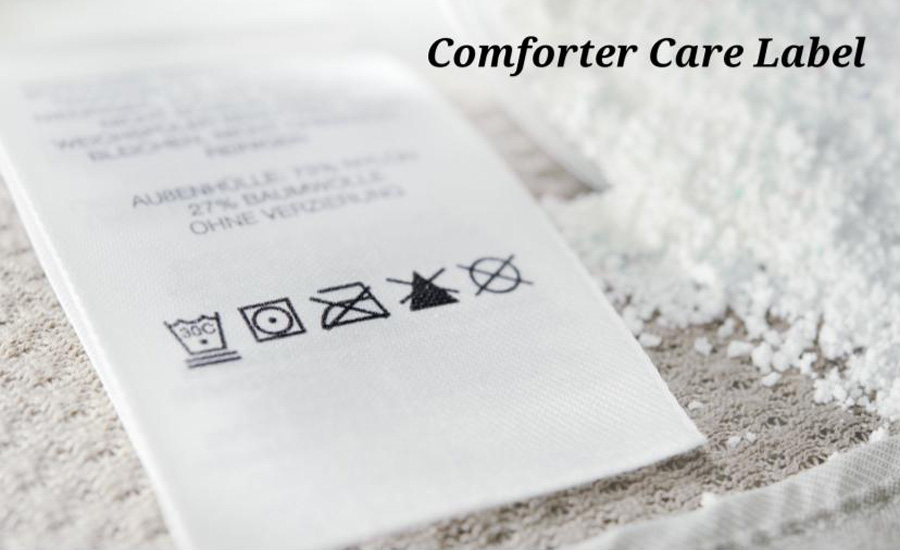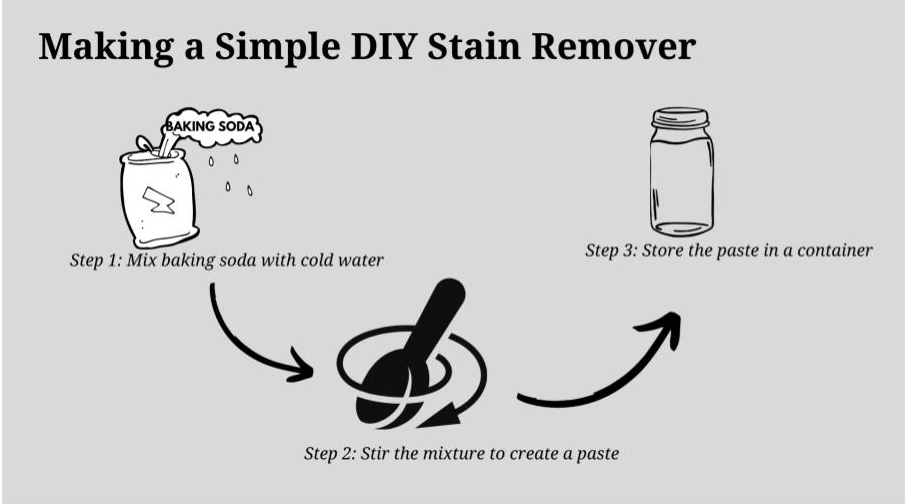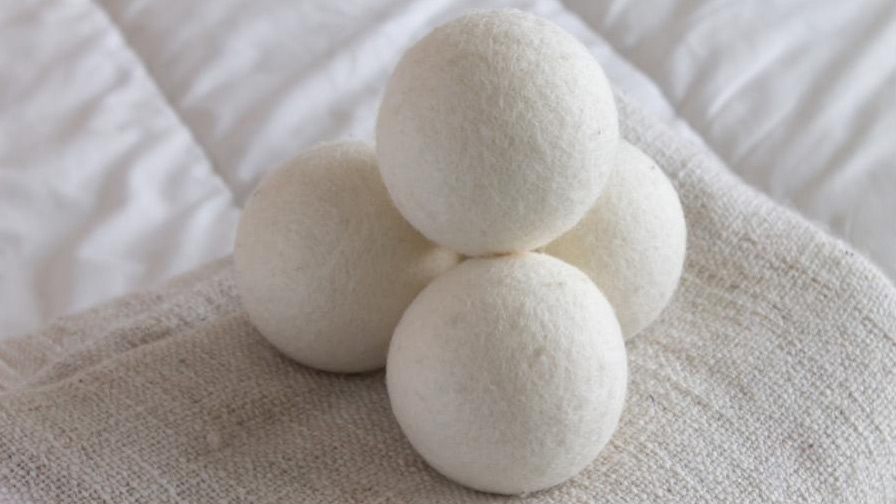Your bed should be a sanctuary.
After all, you’ll spend nearly a third of your lifetime in it.
Like any other person who values comfortable sleep, you understand how often you should wash your bedsheets and pillowcases.
You know how to keep your mattress clean. You’ve got a washable cover, and perhaps, you even vacuum-clean your mattress regularly.
But what about your comforter?
How often should you wash it? Is a duvet cover enough to keep it clean?
Washing a comforter can be a daunting task, and chances are you’re not doing it often enough. Your comforter can harbor fluff, dust, and allergens like dust mites that can compromise a good night’s sleep.
And this begs the question:
How Frequently Should You Wash a Comforter?
You don’t need to wash a comforter as often as bedsheets, but you need to keep it clean.
Care instructions don’t usually include instructions on the washing frequency of a comforter because there are no hard-and-fast rules on how often you should wash it.
However, it’s best practice to wash your computer two to three times a year to keep your bed clean.
If you have dust allergies, you might require a higher washing frequency than others.
However, you can reduce the need to wash your comforter by using duvet covers to protect it from dirt and spill.
But even with a duvet cover, washing comforters twice a year keeps the bed fresh and cozy.
How to Clean Your Comforter — Including Down-Filled Ones
As with choosing a mattress, the types and styles of comforters matter when cleaning. And it’s only logical to pay attention to the manufacturer’s washing advice.
Step #1: Read the Manufacturer’s Care Instructions on the Label

First, check the laundry label on your comforter for the manufacturer’s cleaning instructions.
- Can your comforter withstand the brutal cleaning of a washing machine?
- Or is it delicate and demands hand-washing or dry cleaning?
- If you can machine wash — what wash cycle should you use?
A washing machine can shrink or damage materials like silk or wool.
As a result, woolen and silk comforters have a “Dry Clean Only” instruction on the label. If that’s the case with your comforter, let professionals handle the cleaning process for you.
On the flip side, if the label allows machine washing, pay attention to specifics like water temperature — cold or warm? Should you use the delicate cycle?
When you’re familiar with the manufacturer’s instructions, proceed to step two.
Step #2: Spot Clean the Comforter Before Washing
Spot-treat any stain on the comforter before the actual washing to prevent the stain from spreading. You can make a simple DIY stain remover or buy one to help you remove stains from your comforter.

It’s easy to make a stain remover: Mix baking soda with cold water to create a paste. Then, proceed as follows if the stain is fresh:
- Moisten a clean cloth with cold water
- Using the moistened cloth, wet the stain on your comforter
- Smear the stain remover to the wet stain
- Allow some minutes for the stain remover to act on the stain
- Wipe using a different clean cloth to remove the stain
For older stains:
- Wet the stained area with cold water
- Smear the wet stained area with a stain remover and wait for some minutes
- Using another clean rag, wipe the area to remove the stain
Step #3: Mend Tears Before You Wash a Comforter

The cleaning process can break loose threads, widen tears, and cause your comforter’s filling to spill out.
The solution?
Repair before you wash.
Mending is an extra process, but it’s worth it because it improves your comforter’s lifespan. It’s easy to repair:
- Examine your comforter, watching out for loose seams and small tears.
- Using a needle and thread, repair these areas before washing.
And now it’s time for the actual wash.
Step #4: Select a Big-Enough Washing Machine

Your comforter should be loosely fit in the washing machine.
Otherwise, the washer will scrunch and compress your comforter during the wash cycle and prevent proper cleaning.
If you need to pack in the comforter it’s more likely that your washer is too small. You should take it to the local laundromat instead.
Large, industrial-size washing machines can clean comforters for all bed sizes — even king-size comforters — without any difficulty.
Next, choose the cool water settings on the delicate cycle of your washing machine. Then, add an extra cycle to remove stubborn dirt and bacteria.
If you don’t have a washer-dryer, use the hot water setting to kill dust mites with the high temperature.
Make sure to stick to the manufacturer’s temperature recommendations to protect your comforter’s color and fabric.
Step #5. Add the Right Laundry Detergent
Add mild or natural laundry detergent to your washer because they are gentle on most fabrics.
Inappropriate detergent can damage the structure of sensitive fiber of silk or wool.
If your comforter cannot withstand the turbulence of washing machines, you can dry-clean or hand-wash it.
Hand-Washing a Comforter
It’s easier to hand-wash a comforter in a bathtub or large basin.
Proceed as follows:
- Fill the tub with cold water.
- Add mild detergent.
- Swirl your hand in the bathtub to mix the water and the detergent.
- Dip the whole comforter in the water-detergent mixture in the tub.
- Pat down the comforter and swirl.
- Allow the comforter to soak for at least 10 minutes.
- Gently press the comforter to drain the water (don’t squeeze-dry the comforter to maintain the filling’s fluffiness and maintain its shape).
- To rinse, fill the tub with cold water and continue pressing until there are no suds.
- Drain the tub and press down the comforter to remove excess water.
After washing, you can hang your comforter to dry or place it in the machine on a delicate or air-dry cycle.
Step #6. Dry Your Comforter (Without Compromising Its Fluffiness)
After washing, put the comforter in the dryer.
Again, it’s essential to check the manufacturer’s care label for instructions about the dryer’s heat levels.
Before putting it in a dryer, shake out the comforter to redistribute the filling. Shaking out also speeds the comforter’s drying process.
The chances of achieving a perfectly even drying cycle are slim. However, a few extra steps can ensure your comforter’s filling stays as fluffy and lump-free as possible.
There are two ways to get the fluffiest dry as possible. You can:
- Use tennis balls or wool dryer balls to dry your comforter
- Tumble dry on low heat
Use Tennis Balls or Wool Dryer Balls to Dry Your Comforter

Add a few clean tennis balls or wool dryer balls to your dryer to absorb the moisture and remove static charge.
The best part?
Tennis balls or wool dryer balls prevent your comforter’s fillings from clumping in one area.
Tumble Dry the Comforter on Low Heat
Next, tumble dry on low heat.
Low temperatures translate to a longer drying duration. However, gentle drying protects your comforter from wear.
Check the comforter every 30 minutes and fluff it out until it is dry.
Step #7: Sun-Dry and Air Out
The sun rays kill any remaining dust mites and ensure that the comforter is completely dry.
A damp comforter may breed mold and mildew, which is harmful to your health.
The 7 Steps to Remember When Washing Comforters
By this point, you know every step of cleaning a comforter in detail. Here’s a quick checklist of the seven most important things to remember:
- Read the laundry label on your comforter to greenlight the entire washing process.
- Remove any stain before the actual wash — it prevents stains from spreading.
- Mend any tears or loose seams because the cleaning process can worsen them.
- Select a big-enough washing machine for proper cleaning.
- Go easy on detergents. The wrong one can compromise your comforter’s fabric or color.
- Dry your comforter in a way that leaves it lump-free.
- Sun-dry — it gets rid of remaining dust mites or dampness on your comforter.
Follow those recommendations, choose the right mattress, and you’ll save yourself tons of bad nights’ sleep.


